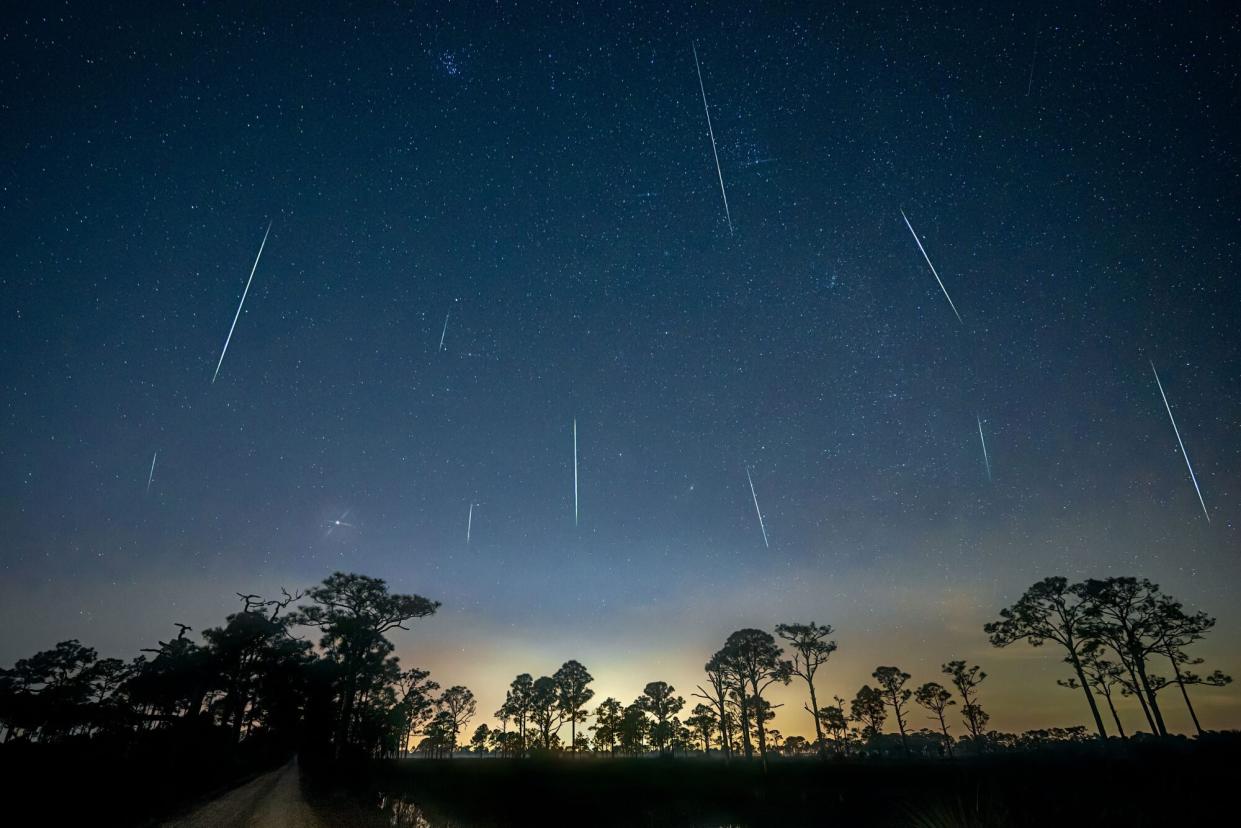December's Geminid Meteor Shower Is Visible Until Christmas Eve—Here's When You'll See the Most Shooting Stars

Diana Robinson Photography / GETTY IMAGES
If you look out into the night sky from now until Christmas Eve, you're bound to spot a twinkling sight: the Geminid meteor shower. This celestial event is unlike others we've seen in recent months, like the Taurid meteor shower and the Leonid meteor shower, since Geminids come from the 3200 Phaethon asteroid, instead of comets, Space reports. Although you have a wide window to catch the meteor shower during the holiday season, it will peak on the starry nights of December 13 and 14.
Stargazers will be able to see up to 150 meteors per hour during the shower's peak period. However, scientists are noting that they will likely be duller in appearance this year, as the moon will shine at 70% illumination, making it much brighter than the fainter Geminids.
Related: 10 Must-Haves for a Night of Stargazing
This meteor shower will still be the strongest one to catch this year, since Geminids are known for their unparalleled speed. The individual meteors continuously reappear year after year, as the particles from the asteroid are pulled from Jupiter's gravity and head towards Earth.
The best time to see the Geminid meteor shower is at about 2 a.m.; this is when the shower will be at the highest point in the sky in the Northern hemisphere. In an unpolluted, extra-dark area (stay away from street lights), you should be able to see the meteors sans any special equipment like a telescope of binoculars—but give yourself at least 30 minutes to properly view the light show, so your eyes have time to adjust.

